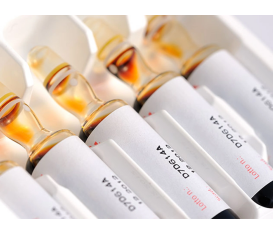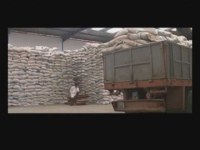Pharmaceutical Labels are labels used for the purpose of identifying and providing information about pharmaceutical products. The custom pharmaceutical labels include information such as dosage, warnings, instructions for use, and more, to aid users in proper usage of the product. They are usually found on the outside of drug packaging. Jinya Label is a leading pharma labels manufacturer, specializing in producing high-quality labels that meet regulatory requirements and ensure clear and accurate information for the safe and effective use of pharmaceutical products.
Types of Jinya Pharmaceutical Labels
01
Synthetic Paper Label
Synthetic paper label is a paper-like material made with a unique blend of synthetic fibers and specialty coatings. It has a look and feel that is similar to traditional paper, but it is waterproof, tear-resistant, and more durable than standard paper. It is the ideal choice for labels that need to withstand harsh conditions and still look great.
How Technology Is Changing Pharmaceutical Labels?
Technology is changing the way pharma labels are created, printed, and handled. With the emergence of digital printing, pharmaceutical labels can now be printed on demand, allowing for quick turnaround times and cost savings. Additionally, with the use of RFID tags and other sensors, pharmaceutical labels can now be tracked in real-time, providing better accuracy and safety for pharmaceuticals. Furthermore, digital printing allows for the use of variable data printing, which means that unique identifiers can be printed on a single label, enabling traceability and making counterfeiting more difficult. Finally, technology is helping to reduce waste. By using digital printing, digital label for pharmaceutical can be printed on demand, eliminating the need for excess inventory and saving companies both time and money.
How Pharmaceutical Labels Improve Patient Safety?
Pharmaceutical labels are an important tool in helping to ensure patient safety. The digital label for pharmaceutical provides key information about the medication, such as the dosage, side effects, and potential interactions with other drugs. This information is essential for medical professionals to ensure that the correct medication is being prescribed and that the patient is taking the correct dosage. Additionally, pharmaceutical labels can help to reduce potential errors by making sure the correct medications are being prescribed and that the patient is taking the correct dosage. They can also help to alert medical professionals to potential drug interactions. By providing this vital information, pharmaceutical labels can help to improve patient safety by reducing the risk of adverse events caused by medication errors.
Location : Room 610, Block B No 18, Fangsi Road, Songjiang Distrct, Shanghai, 201601 Shanghai,
Contact : Zhang Emma, +86 21 67896199








